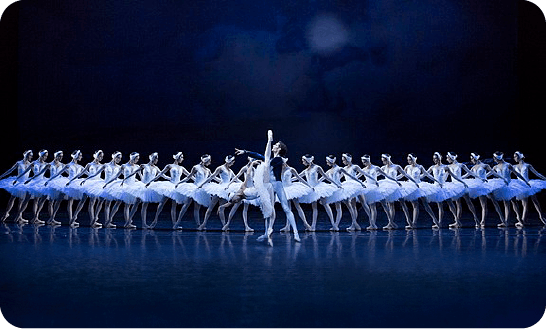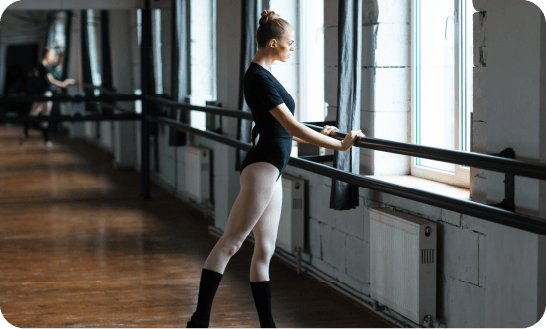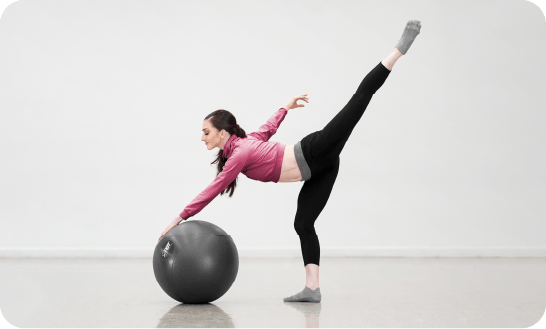Russian Ballet: Poise and Politics
‘As long as they keep dancing and the diplomats keep talking, we’ll have no war’. It has been almost 70 years since American Impresario Sol Hurok commended the arrival of Russian ballet troupes on Western soil. Sadly, although ‘they’ have indeed kept dancing, the diplomats have now stopped talking and ‘we’ are today at war.
Introduction
Recent geopolitical tensions continue to produce challenges for artists and theatre goers alike as they question the importance of Russian Ballet and how to best support dancers and their training methods amidst crisis.
This Blog will explore:
- History of Soviet Ballet
- Ballet as a political propaganda device
- The effects of the war on dancers and their technique
- How to best support dancers affected by the war: advantages of PBT
Looking to the future
Changing Attitudes to Russian Ballet
Following the invasion of Ukraine, a seismic shift has been seen across the ballet world. In response to the conflict, audiences appear to be less invested in the lakes of the original Russian Ballet and more in what lies across the pond. As more and more Russian ballet dancers and Ukrainian artists seek employment in European Ballet companies, the ballet world is seeing a diversification of techniques and traditions, and a blend in schools of Eastern and Western thought.
Soviet Russian Ballet

Despite having French and Italian routes, ballet is very much inextricable from Russia and the promotion of Russian supremacy. One of Russian Ballet’s most prolific choreographers was Lev Ivanov. His famous 2nd and 4th acts from Swan Lake (commonly known as the white acts) involve 32 swans on stage, each in perfect alignment with not a feather out of place. As they move on mass in complete synchronicity, the Russian ballet dancers gracefully communicate the soviet experience, embodying the ideals of abandoning individual desires for the sake of the collective.
Russian Ballet Technique
Russian Ballet dancing is mostly informed by the Vaganova technique. Agrippina Vaganova’s ‘Fundamentals of Classical Dance’ written in 1934, meticulously lays out the exercises needed to create Principal Russian ballet dancers. With an emphasis on the use of 'epaulement' (shoulder movements), back work and the mechanics of turnout, Russian ballet soon became an idolised technique with many european and US students migrating East to perfect their artform. Characterised by its discipline and brutality, Russian Ballet has long been seem as the home of ballet's finest.
Politics and Ballet
Historically, Russian ballet companies were treasured by European and American audiences. Still today, their dancers are recognised and deservedly applauded as some of the best artists of the 21st century. However, following its offensive against Ukraine, Russian Ballet companies, owing to the political agenda they promote, have been greatly criticised. The prestigious American Youth Grand Prix controversially chose to make its view loud and clear when it barred the Mariinsky (Russian Ballet Theatre) performance during the Prix’s 25th anniversary celebrations.
Public opinion seems divided on this front. Should art be used to make a political statement? Should art not encourage resolution? The popularity of this line of questioning would suggest that many believe art, and by extension ballet, to be exempt from the sanctions imposed on other Russian goods and services.
The history of ballet makes answering these questions difficult. Ballet, particularly as an expression of Russian culture, has always been a political tool. Its symbolism, its music, its story remains incredibly difficult to extract from the political setting in which it was born.
Displacement of Dancers

Interestingly, the defection of ballerinas has not been limited to Russian Ballet Stars but also young aspiring Ukrainian and Russian dancers. When global superstar Olga Smirnova moved to the Dutch National Ballet in early March of 2022, over 200 pre-professional dancers moved overseas with her. Seeking employment in some of the world’s most famous ballet institutions including: the Berlin State Ballet, Bavarian State Ballet and the Royal Ballet, Ukrainian and Russian ballet dancers fought to find their footing on foreign soil. When displaced Ukrainian and Russian dancers joined European establishments, they shared their technique, their practices, and their schools. In everyday class, they started to adjust to European training methods, coming to terms with the fast footwork of the French and the dynamic movement quality characteristic of American repertoire. Each dancer could learn from the other, picking elements from different methodologies and using these to enhance and diversify their own technique.
Where previously, Ukrainian and Russian ballet dancers would have been limited to careers in companies that adopted solely the Vaganova or Bolshoi technique, experience in the Western world has afforded them a breadth of employment opportunities.
Supporting Dancers Amidst Crisis
In order to maintain the physical aptitude necessary for ballet, dancers must take daily classes. However, as a result of the conflict, many Ukrainian and Russian ballet dancers were not able to access training facilities, or dance instructors. To mitigate the impact of lost time, extra support and strength training needs to be done alongside classwork.
Advantages of PBT

Techniques such as Progressing Ballet technique (PBT) prioritise muscle memory development to help acquire the strength needed for dance whilst simultaneously developing technique and alignment. PBT’S non-weight bearing exercises would be particularly beneficial for dancers who have not been able to take class for some time. The gradual building of exercises and implementation of new material at a steady pace will help those Russian and Ukrainian dancers prevent injuries and prepare for the physical demands of ballet.
The Russian ballet technique is one that demands extremes. Dancers who have been taught in this manner without supplementary exercises may greatly benefit from a technique like PBT that addresses key areas of weakness such as core stability, helping dancers return from injury/time off and properly unlock their potential.
Looking to the Future
The war, though divisive, has created the perfect opportunity for the integration of both dancers and their techniques. As Russia attempts to dominate Ukraine, the once famed Russian Ballet is arguably losing its dominance on the world stage. It is now the duty of Western nations to support fleeing artists and help them fill any gaps in their training whilst they navigate life during war.
The role of ballet as an inclusive, expressive and multi-faceted art form has never been more important. Though in previous years, ballet has been used to propagate political power, now it must speak of community, of support and of humanity.
As war continues to deliver its ugly message of violence and possession, ballet must now speak of freedom and resilience. Indeed, ballet's very nature opposes war: it is an art form to be shared and not to be owned.
Sign up to our newsletter
Receive tips, news, and advice.